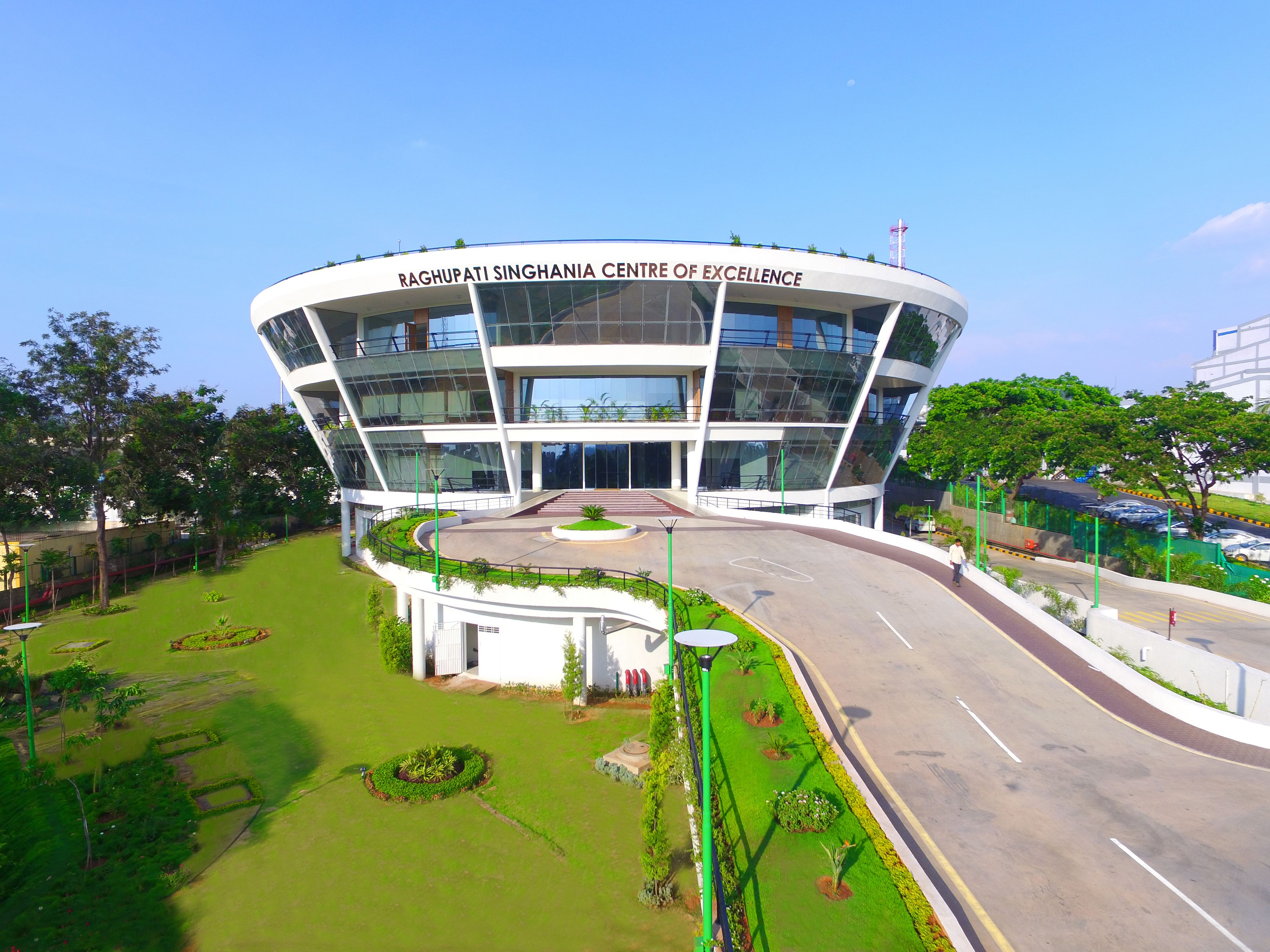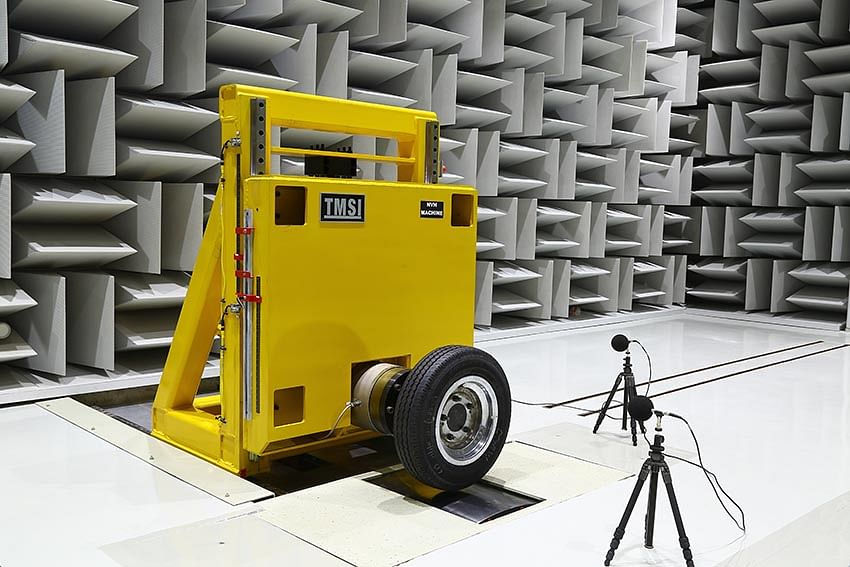Rajiv Prasad: 'Our new Centre of Excellence will help us manufacture global-standard tyres.'
On August 28, JK Tyre inauguated its new Global Research & Technology Centre at Mysore. Company president Rajiv Prasad spoke to Kiran Bajad on the R&D facility which offers the latest technologies in the tyre manufacturing space, including a semi-anechoic chamber for reduced noise vibration and harshness data analysis. He also reveals plans to improve efficiencies, grow capacities, launch new products, expand its global footprint and also enhance brand recall.
On August 28, JK Tyre inauguated its new Global Research & Technology Centre at Mysore. Company president (India Operations) Rajiv Prasad spoke to Kiran Bajad on the R&D facility which offers the latest technologies in the tyre manufacturing space, including a semi-anechoic chamber for reduced noise vibration and harshness data analysis. He also reveals plans to improve efficiencies, grow capacities, launch new products, expand its global footprint and also enhance brand recall.
JK Tyre recently opened a new Tech Centre in Mysore. What role is it going to play in future technologies?
The Raghupati Singhania Centre of Excellence (RPSCOE) Centre in Mysore is the next generation of tyre technology with the best scientists, engineers and technicians in the industry, who will work on optimising product performance and product design cycle time through simulation and predictive techniques.

We have invested enormous resources in the Centre and it will play an instrumental role in shaping technology, disruption, innovation, research and development at JK Tyre. RPSCOE is our hub for focused research on multiple aspects of tyre technology, including developing advanced laboratory predictors for tyre performance and providing key inputs for life prediction of rubber products. Research at the centre will be on material and compound development, future technology, computational mechanics and tyre characterisation.

One of the special features of the Centre is the Semi-Anechoic Chamber -- a first in the Indian tyre industry. It uses specialised software for noise vibration and harshness data analysis. This will help us manufacture global-standard tyres , which are fit for the future and at the same time, in line with our mission to be a ‘customer-obsessed’ company.
JK Tyre caters to every segment of the automobile industry. What is the business growth strategy for the India market, the near-term plans and key focus areas?
Being a homegrown tyre manufacturer, our priority is to establish a strong presence across tyre categories in India, including the non-traditional segment. In the past two years, our key product launches, including the two-wheeler range Blaze and farm tyre range Shresth, have helped us expand our product base. This strategic expansion has helped us grow by replicating the success we have enjoyed as leaders in the truck/bus radial segment in India.
In the near-term, our focus will remain on expanding linear capacity by full utilisation of our manufacturing plants, innovation and product design.
What are your product expansion strategies?
Apart from new product launches, our focus is on providing a 360-degree experience to our customers. We aim to achieve this by strengthening our aftersales services network, which includes brand retail shops in different formats like Truck Wheels, Steel Wheels and Retread Centres. This will result in higher customer satisfaction by delivering a lower cost-per-kilometre.
At present, we have a countrywide network of over 4,000 dealers, including over 300 Steel Wheels, 60 Xpress Wheels, 40 JK Truck Wheels and 28 JK Retread Centres.
Technology and R&D are a focus area for us, and we recently inaugurated the Raghupati Singhania Centre of Excellence in Mysore. The R&D facility houses Hari Shankar Singhania Elastomer &Tyre Research Institute (HASTERI) and JK Tyre Tech Centre, which will fulfil India’s need for developing newer and better technologies for elastomer and tyres.
India is one of the largest and fastest growing automotive markets globally. What does this mean for JK Tyre? What are the near-term and long-term forecasts and what do you think are the major growth areas in India?
India is the fourth largest automobile market in the worldwide. The country is witnessing rapid urbanisation, improved economic parameters and increased consumer spending. The automobile sector, in particular is going through a rapid evolution of technology, newer laws and more globally-aligned emission norms, which are encouraging mobility.
The Indian tyre market is witnessing a push towards greater mobility, high efficiency, greener, safer and more sustainable products, technology upgradation, including introduction of electric vehicles. These trends point towards more sophisticated manufacturing processes, increasing efficiencies and fuel-saving products with lower resistance and performance enhancement.
What are the major growth areas for JK Tyre in the domestic market?
We see the replacement market and Original Equipment Manufacturer (OEM) sales will drive our growth in the foreseeable future. We are constantly on the lookout for trends in the market and recalibrate our strategy to leverage these positive trends for enhanced customer satisfaction and company growth.
Going forward, we will focus on improving efficiencies, growing capacities, launching new products, expanding our global reach and enhancing our brand recall.
What, in your opinion, are the key opportunities in India? What is the level of engagement with OEMs for future models?
OEM sales is one of the areas where a huge opportunity lies in the Indian tyre market. According to the trend, the contribution of OEM sales in growth will strengthen even more in the next few years owing to better road infrastructure, stable interest rates and a good monsoon, which had supported the tyre demand.
Currently, we work with over 75 OEM partners in India and Mexico and have been working on enhancing our reach to OEMs with a wider range of products, expanding to newer vehicle segments and markets. Our Mexican operations are now selling directly to OEMs, including Chrysler, New Holland, Nissan, John Deere and Renault.
What are the major global trends in the tyre industry? How do you see the technological progression at JK Tyre?
Customers and OEMs, both on the passenger vehicle and commercial vehicle front, are more conscious about noise and rolling resistance coming from tyres. We also see a trend towards tyres becoming lighter and more durable. JK Tyre has been working strongly in that direction and a huge focus with deeper customer engagement and focus on R&D.
The other change is the movement towards EVs. In fact, JK Tyre has supplied some tyres for OEM fitment for electric buses but the overall movement towards EV is still a while away as it will take a long time for the whole infrastructure and technology to take shape. But surely that would be the direction and JK Tyre will continue to craft out its leadership in that direction.
How is the company faring on the export front and are you looking to expand manufacturing capacity?Our exports grew by 34 percent in FY2017-18 compared to FY2016-17, driven by newer products and a wider reach in the North American market. With our Tornel facility (Mexico), we now have greater access to both the Americas.
In addition to this, we have enhanced our OEM presence by establishing successful partnerships through Tornel. We predominantly cater to the replacements in the export market, which includes Truck Bus Radial (TBR), Truck Bus Bias (TBB) and Passenger Car Radial (PCR) segments. We have been driving our plans to further develop market specific products for direct OEM sales.
Our Mexican operations are now selling directly to OEMs, including Chrysler, New Holland, Nissan, John Deere and Renault. The Mexican portfolio is largely dominated by passenger car tyres, followed by trucks, LCVs, Farm and industrial tyres
What are some of the export strategies that JK Tyre is working for the near-term?
As a part of our efforts to bolster our global presence, we fueled mass merchandise initiatives with Walmart in Mexico and opened a new office in North America. We have been able to tap the market more efficiently by bringing synergy with manufacturing in Tornel and a more focused approach towards the development of the product mix. Moreover, we are planning to open new marketing hubs in South America and Africa, which will give an impetus to our business.
What is the level of current business in terms of total volumes, numbers of plants, key customers and segments?
Despite external challenges and headwinds in FY2017-18, we improved our sales volume by recording impressive 11 percent growth, which was higher than the industry at large. We achieved this by enhanced capacity utilisation at our 12 modern plants, out of which nine are in India and three in Mexico. Currently, the total capacity of all our plants together is around 32 million tyres per annum.
We offer a wide range of products catering to diverse business segments in the automobile industry. Our portfolio includes TBR, TBB, small commercial vehicle (SCV), light commercial vehicle (LCV), farm vehicle and PCR segments, both in India and overseas. The brand also caters to Off-the-road (OTR) and two- and three-wheeler segments in India.
We operate an extensive network, which includes OEMs, over 4,000 channel partners and 1,500 fleet managers for providing effective solutions to our customers apart from sales. We also sell our products through over 450 fuel retail outlets of IOCL, HPCL and Essar Oil across India primarily to reach out to customers in the interiors of the country.
Apart from retailing, we are also engaged in the aftersales services business. We provide cradle-to-grave solutions through an extensive network of servicing and brand retails shops to our customers. In terms of capacity, we hope to register 100 percent output with 85 percent capacity utilisation in the TBR segment and 94-95 percent capacity utilisation in the two- and three-wheeler segment respectively. With the launch of Shresth in the farm segment, it will further strengthen our position in that segment.
RELATED ARTICLES
INTERVIEW: "EV Demand is Rebounding both in India and Around the Globe" - JLR's Rajan Amba
Jaguar Land Rover India MD Rajan Amba discusses the India–UK FTA, the company’s manufacturing plans, the upcoming Panapa...
TVS Celebrates 20 Years of Apache, Eyes Premium and Global Push
Marking two decades of its flagship performance brand, TVS Motor unveiled special anniversary editions on Saturday while...
Q&A: Mahindra's Nalinikanth Gollagunta on Upcoming Festive Season, 'Bold' Design Choices
Automotive Division CEO Nalinikanth Gollagunta says mid-teens growth is achievable with Roxx ramp-up, BEVs, and a resil...






 14 Sep 2018
14 Sep 2018
 11107 Views
11107 Views





 Prerna Lidhoo
Prerna Lidhoo


 Darshan Nakhwa
Darshan Nakhwa


